Technically, Augustus Saint-Gaudens was born in Dublin, Ireland and from the age of six months was reared in New York City. But by his late 30s he began spending his summers in Cornish, New Hampshire, moving there year-round from 1900 to his death from cancer in 1907. I had the opportunity to visit the Saint-Gaudens home and studio in Cornish a few weeks ago, now the Saint-Gaudens National Historical Park, where I saw several of his greatest sculptures.
The most recognizable is his Abraham Lincoln: The Man, better known as the Standing Lincoln, which graces Lincoln Park in Chicago. Full-size recastings can be found in London’s Parliament Square, Mexico City’s Parque Lincoln, and, of course, at the Saint-Gaudens site in New Hampshire. There are numerous reduced size replicas throughout the United States, including inside the Lincoln Tomb in Springfield, Illinois. Saint-Gaudens also created a seated Lincoln called Abraham Lincoln: The Head of State, also in Chicago, for the 1909 centennial of Lincoln’s birth.
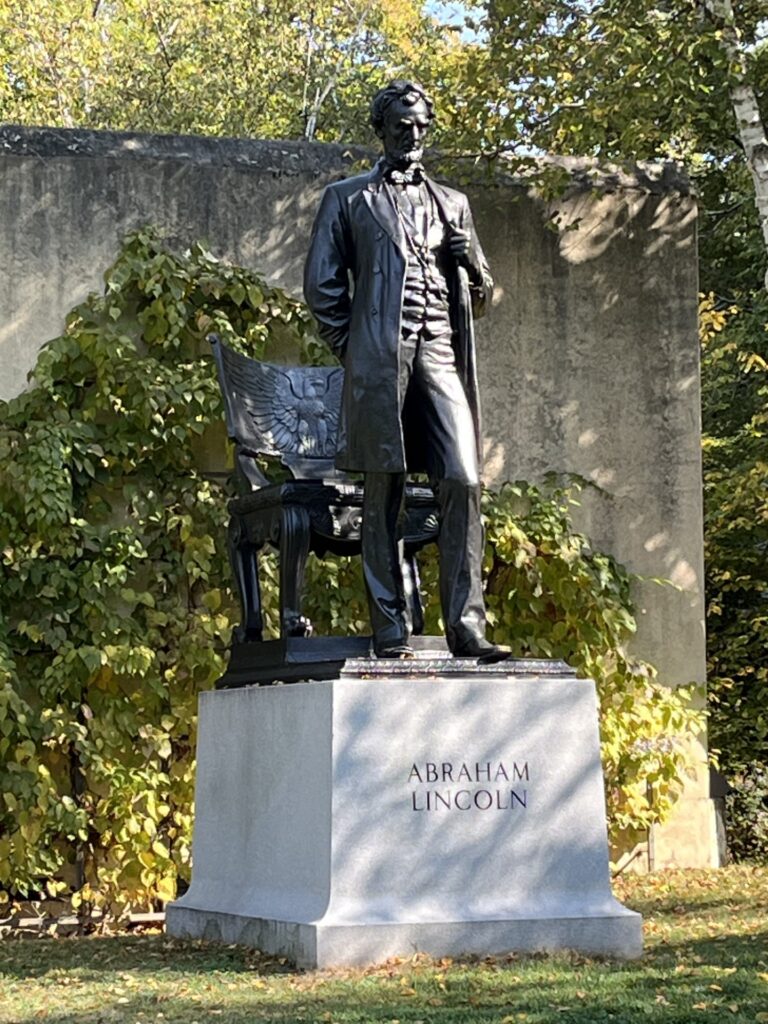
My visit started the night before when I stayed at the Windsor Mansion Inn across the river in Vermont. Saint-Gaudens designed the stately home for his family friend, Maxwell Evarts, a Vermont lawyer and state politician. We’ll come back to the Evarts family in a minute. I stayed in the Auguste Rodin room, named for the French sculptor famous for The Thinker and The Kiss. Rodin never visited, but the story goes that he saw a plaster cast of Saint-Gaudens’s Robert Gould Shaw Memorial at an exhibition and, recognizing its brilliance, was noted to have bowed and tipped his hat to it. Another plaster cast is currently on display at the National Gallery of Art in Washington, DC.
After spending the night in the historic mansion, I crossed over the Connecticut River via the Cornish-Windsor Bridge, the longest wooden bridge in the United States and the longest two-span covered bridge in the world. I found the Saint-Gaudens site along a long early-fall foliage-lined lane, arriving just in time for a guided tour. Not surprisingly, the Standing Lincoln statue features prominently as you approach the main visitor’s center. With essentially a private tour for the two of us, the park ranger explained the background behind Saint-Gaudens’s life and the Lincoln statue. She expanded beyond her usual tour spiel when I told her I was a Lincoln researcher and writer. She was happy to expound to someone who knew more than the usual tourists.
The grand Lincoln is not Saint-Gaudens’s only famous statue, of course, and soon we were regaled with stories behind his first major commission, a monument to Civil War Admiral David Farragut that sits in New York City’s Madison Square. Like the Standing Lincoln, the architectural exedra surrounding the Farragut was designed by his friend Stanford White. Farragut established Saint-Gaudens’ reputation as a master sculptor. His many other significant figures include the Adams Memorial, the Peter Cooper Monument (of Cooper Union fame), and the John A. Logan monument, as well as the fabulous equestrian statue of William Tecumseh Sherman at the corner of New York’s Central Park. And then there is the Memorial to Robert Gould Shaw and the Massachusetts Fifty-Fourth Regiment, a massive bronze relief honoring the United States Colored Troops regiment depicted in the film, Glory, the original of which sits on the edge of Boston Common facing the Massachusetts State House. I had seen the original in Boston last year on one of my road trips.
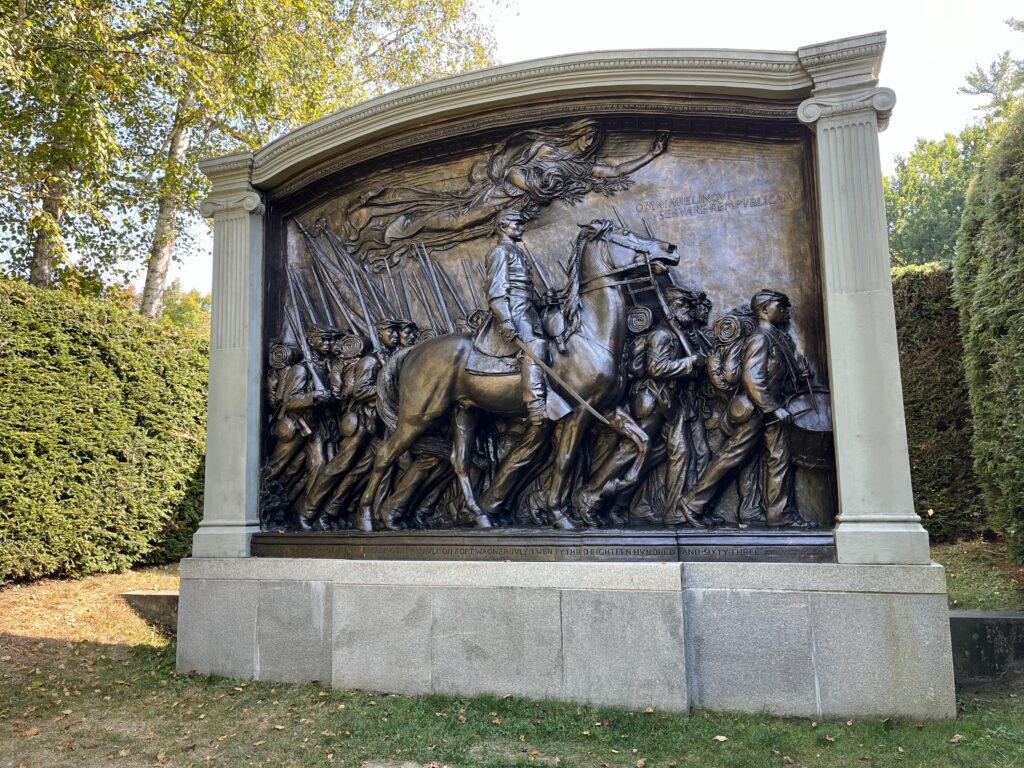
Which gets me back to Maxwell Evarts family of the Windsor Mansion Inn. Maxwell’s father, William Maxwell Evarts, had served for several months as Attorney General to Abraham Lincoln’s second vice president and successor, Andrew Johnson. He later served as Secretary of State under Rutherford B. Hayes and then United States Senator for New York. Exceedingly wealthy, Evarts was a patron of the arts. His daughter, Hettie, married Evarts’ law partner, Charles C. Beaman (who had negotiated the reparations agreement associated with the British allowing the Confederacy to build the CSS Alabama). Together they served as both models and benefactors for Saint-Gaudens lucrative business creating bronze relief sculptures. Saint-Gaudens used the money to purchase Beaman’s estate, which he renamed “Aspet” and that now makes up the Saint-Gaudens National Historical Park.
Something I didn’t known. In addition to the prolific production of relief sculptures, Saint-Gaudens, and later his students, designed considerable coinage, including the ultra-high relief “double eagle” $20 gold coin for the US Mint, thanks to a recommendation from President Theodore Roosevelt.
The Saint-Gaudens site is so much more than his sculptures. There is his studio, the house, beautiful walking grounds and hiking trails, and a small temple where Saint-Gauden and his wife’s ashes are stored. The site is well worth the visit.
[Photos by David J. Kent]

Lincoln: The Fire of Genius: How Abraham Lincoln’s Commitment to Science and Technology Helped Modernize America is available at booksellers nationwide.
Limited signed copies are available via this website. The book also listed on Goodreads, the database where I keep track of my reading. Click on the “Want to Read” button to put it on your reading list. Please leave a review on Goodreads and Amazon if you like the book.
You also follow my author page on Facebook.
David J. Kent is Immediate Past President of the Lincoln Group of DC and the author of Lincoln: The Fire of Genius: How Abraham Lincoln’s Commitment to Science and Technology Helped Modernize America and Lincoln: The Man Who Saved America.
His previous books include Tesla: The Wizard of Electricity andEdison: The Inventor of the Modern World and two specialty e-books: Nikola Tesla: Renewable Energy Ahead of Its Time and Abraham Lincoln and Nikola Tesla: Connected by Fate.



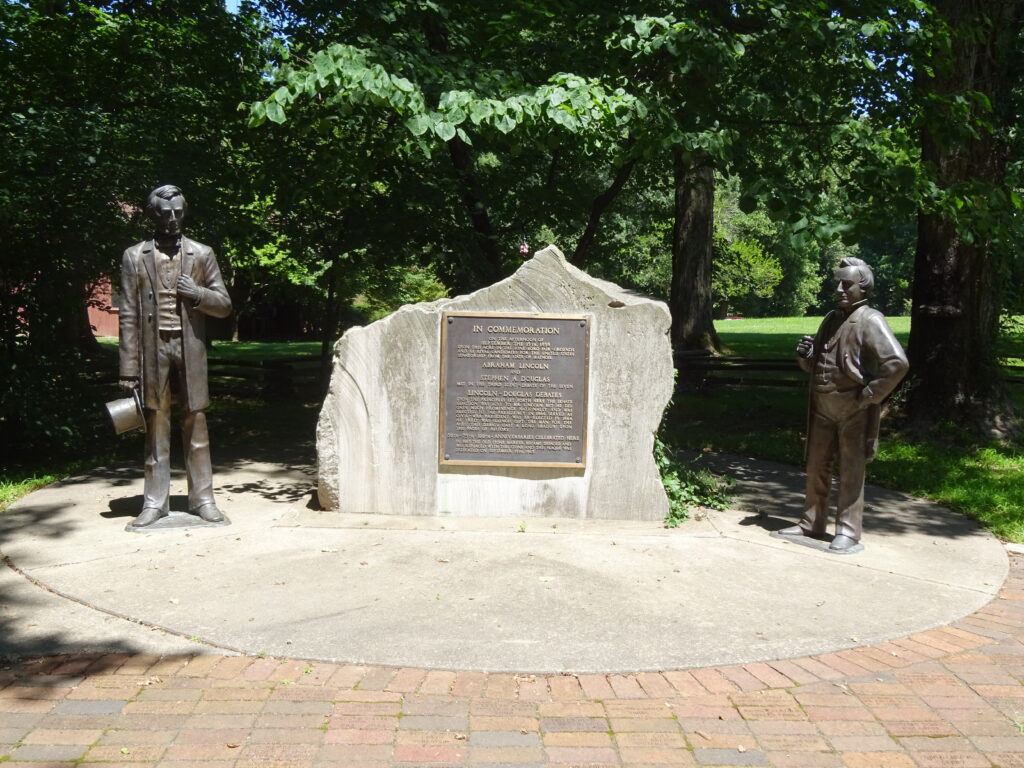
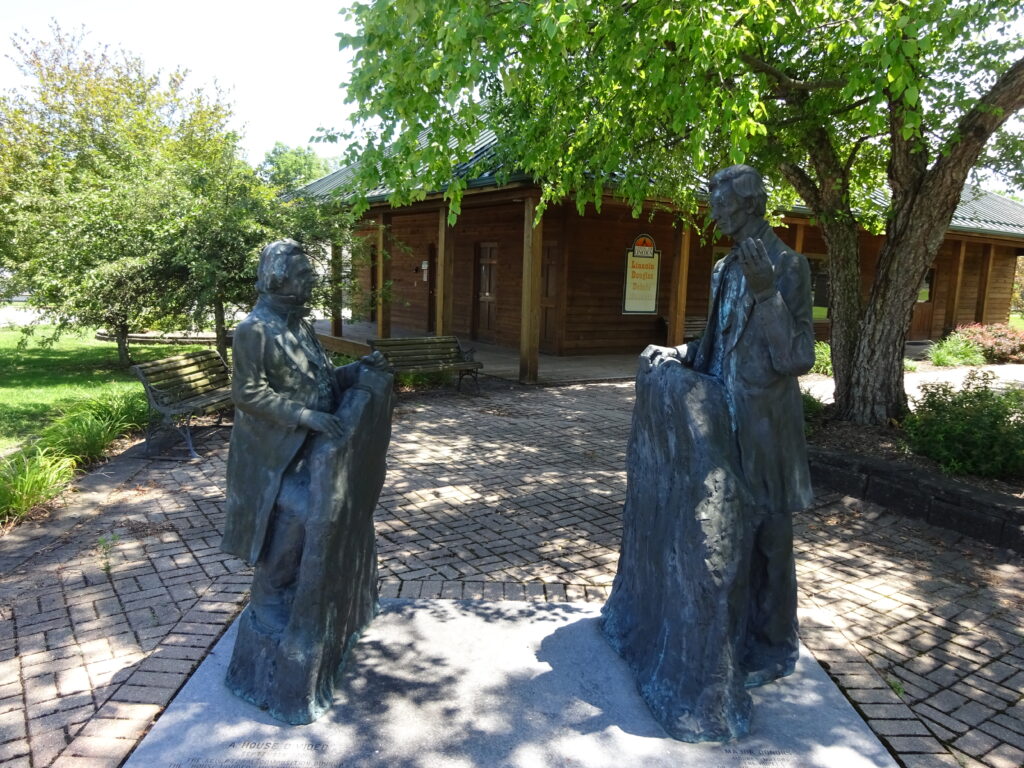
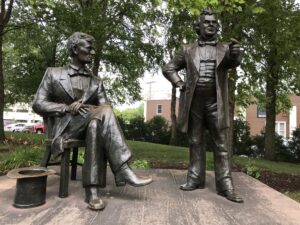 Less than a week after their first debate in Ottawa, Abraham Lincoln and Stephen A. Douglas ventured into Freeport, Illinois, for the second of their seven joint debates during the senate election of 1858. By all standards, Freeport turned out to be the most consequential. From it came the Freeport Doctrine.
Less than a week after their first debate in Ottawa, Abraham Lincoln and Stephen A. Douglas ventured into Freeport, Illinois, for the second of their seven joint debates during the senate election of 1858. By all standards, Freeport turned out to be the most consequential. From it came the Freeport Doctrine.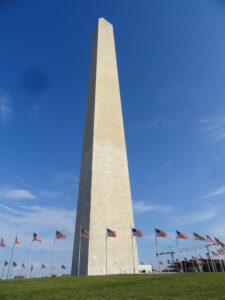 The fourth of July, our annual anniversary of the signing of the Declaration of Independence, has always a day of commemoration. Throughout his life, Abraham Lincoln attended many of these celebrations. But July 4, 1848, was even more special than usual. On that date, Lincoln watched the cornerstone of the new Washington Monument being laid.
The fourth of July, our annual anniversary of the signing of the Declaration of Independence, has always a day of commemoration. Throughout his life, Abraham Lincoln attended many of these celebrations. But July 4, 1848, was even more special than usual. On that date, Lincoln watched the cornerstone of the new Washington Monument being laid.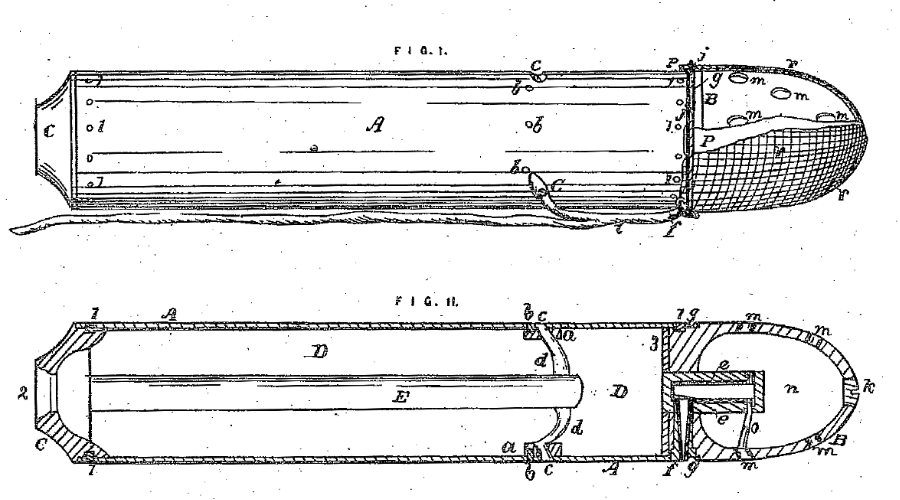
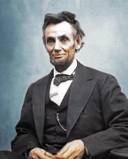 Things were not looking good for Abraham Lincoln and the Republican Party in 1864. The populace was fatigued from over three years of bloody war with no end in sight. Lincoln had finally found a general “who fights” in Ulysses S. Grant, but even Grant was bogged down with a series of inconclusive – and horribly bloody – battles in the Wilderness, Petersburg, the Crater, Cold Harbor. And where the heck was William Tecumseh Sherman, who had gone radio-silent in his march across the South.
Things were not looking good for Abraham Lincoln and the Republican Party in 1864. The populace was fatigued from over three years of bloody war with no end in sight. Lincoln had finally found a general “who fights” in Ulysses S. Grant, but even Grant was bogged down with a series of inconclusive – and horribly bloody – battles in the Wilderness, Petersburg, the Crater, Cold Harbor. And where the heck was William Tecumseh Sherman, who had gone radio-silent in his march across the South.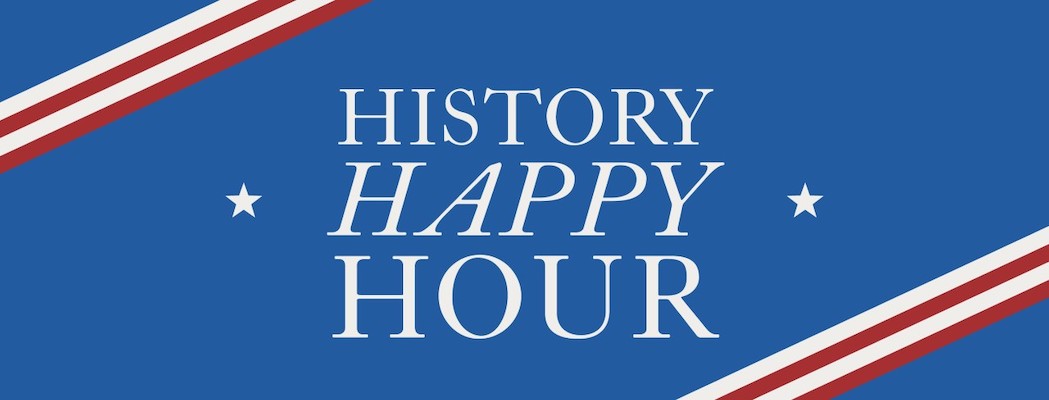
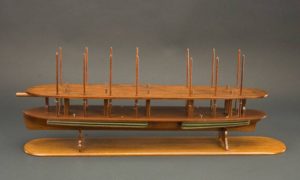 Abraham Lincoln is the only U.S. president to own a patent. His idea for “an improved method of lifting vessels over shoals” was given Patent No. 6369 on May 22, 1849. The development of the patent stemmed from his personal experience getting his flatboat hung up on the New Salem mill dam and his observation of a steamship run aground in the shallows of the Detroit River passing Fighting Island. He watched as the captain of the steamship Canada ordered his crew to collect “all the loose planks, empty barrels, boxes, and the like which could be had” and force them under her hull to buoy the ship higher in the water. Ever the inquisitive one, Lincoln was enthralled with the ongoing operation. The incident got him thinking seriously about how to solve this particular kind of problem.
Abraham Lincoln is the only U.S. president to own a patent. His idea for “an improved method of lifting vessels over shoals” was given Patent No. 6369 on May 22, 1849. The development of the patent stemmed from his personal experience getting his flatboat hung up on the New Salem mill dam and his observation of a steamship run aground in the shallows of the Detroit River passing Fighting Island. He watched as the captain of the steamship Canada ordered his crew to collect “all the loose planks, empty barrels, boxes, and the like which could be had” and force them under her hull to buoy the ship higher in the water. Ever the inquisitive one, Lincoln was enthralled with the ongoing operation. The incident got him thinking seriously about how to solve this particular kind of problem.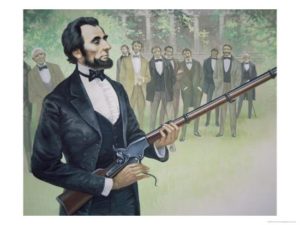 Lincoln’s enthusiasm for mathematics, science, and technology made him a national sounding board for innovations, but he simply could not handle all the inventors pouring letters into his mailbox or showing up at the White House expecting a stamp of approval for their miraculous “war-ending invention.” Unlike today, there was no military-industrial complex developing new weapons during the Civil War. When it came to innovation, the government relied on “the chance, unreliable labors of inventors and amateurs of science” who “literally besieged official Washington after the outbreak of the war.”
Lincoln’s enthusiasm for mathematics, science, and technology made him a national sounding board for innovations, but he simply could not handle all the inventors pouring letters into his mailbox or showing up at the White House expecting a stamp of approval for their miraculous “war-ending invention.” Unlike today, there was no military-industrial complex developing new weapons during the Civil War. When it came to innovation, the government relied on “the chance, unreliable labors of inventors and amateurs of science” who “literally besieged official Washington after the outbreak of the war.”






